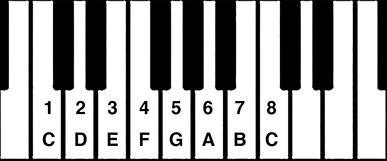
HOST- Jeremy Burns
TYPE- Theory
DURATION- 06:27
BUMPER MUSIC- "String Quartet in Modes- Dorian"
(Matthew Scott Phillips)
ANNOUNCER- Mike Cunliffe
This, our first theory podcast, is elementary but crucial.
In this episode, part 1 of a 2 part series, we will have a brief discussion on melody and harmony. We will also touch on scales, intervals and triads. Part 2 will cover rhythm.
MELODY- A succession or arrangement of notes forming a distinctive sequence or theme, often repeated or revisited through out the piece. This is the horizontal aspect of music.
SCALE- A pattern of notes, arranged in whole steps and half steps, that span an octave.
TONIC- The root or foundation of a key or scale. This is scale degree 1. The ultimate directional goal of harmony.
HARMONY- Occurs when two or more notes occupy the same space in time. This is the vertical aspect of music.
INTERVAL- The difference in pitch between two notes.
TRIAD- A basic three note harmony consisting of the root, the 3rd and the 5th of the scale. There are 4 main types of triads: major, minor, augmented and diminished.
CHORD- Any combination of three or more notes that occupy the same space in time.
C MAJOR SCALE (keyboard)

C MAJOR SCALE (notation+scale degrees)

MELODY EXAMPLE

C MAJOR SCALE + HARMONY OF A 3RD

INTERVAL
(M3)
TRIAD
(C Major)
ARPEGGIO
(as a melody)
MELODY WITH HARMONY OF A 3rd

MELODY WITH CHORDS

C
G
C
C
SAME MELODY WITH DIFFERENT CHORDS

C
Em
G
Am
-Most of our discussions, at this stage, will be based on tonal, or Western European, music. These concepts are based on Jean-Philippe Rameau's "Treatise on Harmony", published in 1722.
-Try to sing along to the notes and melodies you play while you're doing these exercises.
-Know all the notes by name, of course. But when learning and playing scales, start thinking about them as numbers or scale degrees.
-Try to create your own melody. Sing it out in scale degrees and in solfège. Play it on your instrument and notate it on stave paper.
-Take that melody and put chords to it. Then, find alternate chords that fit the same melody.
